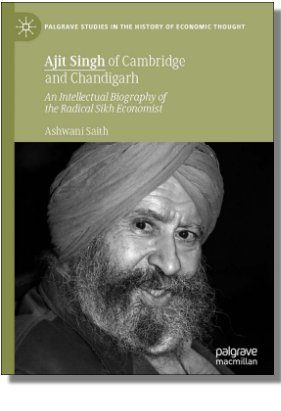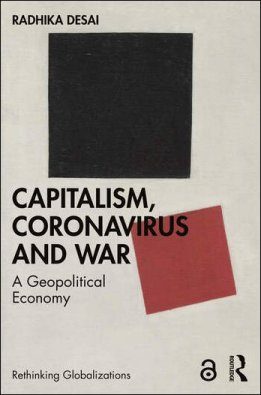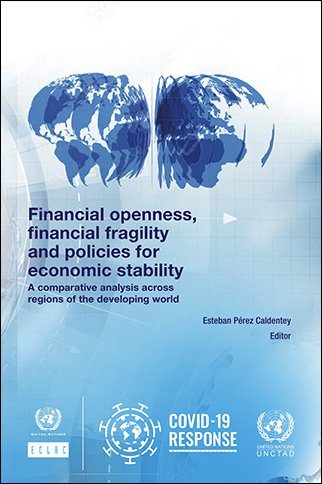Publisher: Third World Network Year: 2023 No. of pages: 42 Download now About the Book…
Ajit Singh of Cambridge and Chandigarh: An intellectual biography of the radical sikh economist Authors: Ashwani Saith (Book Review by Sunanda Sen)
Publisher: Palgrave Macmillan
eBook ISBN: 978-3-030-12422-9
DOI: 10.1007/978-3-030-12422-9
Hardcover ISBN: 978-3-030-12421-2
Softcover ISBN: 978-3-030-12424-3
About the Book
This book examines the life and work of Ajit Singh (1940-2015), a leading radical post-Keynesian applied economist who made major contributions to the policy-oriented study of both developed and developing economies, and was a key figure in the life and evolution of the Cambridge Faculty of Economics. Unorthodox, outspoken, and invariably rigorous, Ajit Singh made highly significant contributions to industrial economics, corporate governance and finance, and stock markets – developing empirically sound refutations of neoclassical tenets. He was much respected for his challenges both to orthodox economics, and to the one-size-fits-all free-market policy prescriptions of the Bretton Woods institutions in relation to late-industrialising developing economies. Throughout his career, Ajit remained an analyst and apostle of State-enabled accelerated industrialisation as the key to transformative development in the post-colonial Global South. The author traces Ajit Singh’s radical perspectives to their roots in the early post-colonial nationalist societal aspirations for self-determination and autonomous and rapid egalitarian development – whether in his native Punjab, India, or the third world – and further explores the nuanced interface between Ajit’s simultaneous affinity, seemingly paradoxical, both with socialism and Sikhism.
This intellectual biography will appeal to students and researchers in Development Economics, History of Economic Thought, Development Studies, and Post-Keynesian Economics, as well as to policy makers and development practitioners in the fields of industrialisation, development and finance within the strategic framework of contemporary globalisation.
Book Review by Sunanda Sen
On a legendary scholar from India and Abroad
As indicated by its title, the book relates to the life and work of the rather unconventional scholar Ajit Singh (1940- 2015) who led the battle for heterodox economics and left politics in the West while continuing to proudly uphold his other identity as a Sikh from Punjab, India . The reader of this very special book will get a comprehensive account, not only of the life’s journey of Ajit Singh which started in an upper middle class family in Punjab, but also his remarkable contributions in several areas of meaningful research concerning both advanced and the developing areas. As can be noticed, Ajit, from the beginning of his career as an economist, chose areas of research which were never of an arm-chair variety. Instead the policy prescriptions that followed from his work raised issues on socially acceptable policies, at the level of private firms, corporate houses, the financial markets and state-run agencies.
The areas of research covered by Ajit Singh, detailed in a comprehensive curriculum vitae completed in 2014, just a year before he died, mentions that his “publications relate to three distinct but related research areas”. The reader can get an idea of those areas and papers from the CV which is attached to the book.
Leaving out the details, the first category in the list include 92 papers, on “Modern Business Enterprise, Finance and Governance, Theory of Firm, Takeovers and Stock markets”, relating to both advanced and emerging markets. The second group includes a set of 89 papers on “De-industrialisation, North-South Competition, Employment, Liberalisation and Globalisation of Financial, Labour and Product Markets”. As in the first set, the papers relate to countries in both the North and the South. Interestingly, three of those papers , co-authored with A. Sheng, are on Islamic Finance, a completely new area of research which caught his attention when he visited Malaysia as an invited professor around 2011. Ajit includes77 papers in a third category of his research under “Industrialisation, Economic Development and Policy in Emerging Markets”.
The book offers a set of well-crafted ten chapters, starting from his early years of grooming in Chandigarh as a combative young man ready to face the world. Ajit’s capacity to withstand adversities had its first test as he arrived in the US without any financial support. Talent as well as capacity for hard work helped Ajit to get suitable openings, moving from Berkley to Cambridge where a lifetime of work was waiting for him.
The chapter “Cambridge: Home from Home” touches on Ajit’s associations with streams of bright young people from India who, in those days, were regularly visiting Cambridge as students or in other positions. Cambridge was also the ground for Ajit turning radical while supporting student rights in Cambridge, or the anti-Vietnam War rallies in London with Tariq Ali. The author recalls the morning after the fall of Saigon, with Ajit “..coming up the few steps (at Sidgewick site) grinning, with Suzy (Paine, a faculty comrade) holding up a national daily with the front page splattered with huge banner headlines announcing the fall of Saigon …”!( p70) What else could be more appropriate to capture the involvement of Ajit with the Vietnam War in the small university town of Cambridge !! I recall our reactions at JNU sharing the moment!
Ajit, after joining Cambridge faculty in 1975 assumed a big role in upholding the heterodox school of thought against neoclassical methods. This was a battle against faculty members, as pointed out by Amiya Bagchi, “ who wanted to mathematize economics into pure theory without content … a battle over the soul of the Faculty of Economics and Politics which was not about the use of mathematics in economics but whether economics would be based on empirical evidence or not”.[i] Involved in what was not just a battle of ideas, Ajit , described by the author as “ Commissar of the Left collective”, was ready to openly dissent and confront.
Several members of the faculty were opposed to members of Ajit’s camp in the Department which shared Keynesian, post-Keynesian, Marxist and other heterodox ideas in their research and teaching. As described in the book, “..Cambridge economics was rendered acephalous: …idiosyncrasies, eccentricities, personalities, egos and individual intellectual passions of wilful prima donnas resurfaced and took over” (p87). Institutional attacks, supported from outside by the Tory government, played a role in crushing the Department of Applied Economics (DAE), the last bastion of heterodoxy controlled by the Left.[ii] The detailed account of the inter-personal rivalry, as described in the chapter appropriately titled as “Faculty Wars”, provides a picture of how reputed centres of scholarship (like the Cambridge economics faculty) could degenerate to triviality. Many a place in India and abroad have or are going through this process; with neo-classical victory robbing their earlier stance and capacity to generate useful research for theory and policy. Often the courses following neo-classical guidelines tally with those offered in the majority of US Universities—a fact which works to lure the students to the package as a passport to admissions in the latter. In my judgement the procedure, by all means, stands opposed to what could be rated as of social relevance in different parts of the world.
It, however, remains to be seen whether the rather ugly and unfair “Faculty War” led to a total loss if judged in terms of continuing the heterodox tradition. The author points to the lasting power of the heterodox group in it capacity to re-assemble by continuing with the heterodox ideas its members believed in. The notable developments included the formation of the Cambridge Political Economy Society and the launch of the Cambridge Economic Journal, very soon a major heterodox journal; the coming together of a small and effective circle of the heterodox researchers in the Judge Institute of Business; and also the continued research in and teaching of development economics by a few within the faculty who chose to struggle. In all, the neoclassical triumph within the faculty did not succeed in decimating the heterodox tradition, in Cambridge or outside.
The idea that “..For Ajit there was no separation between economics and politics; inverting Lenin’s aphorism, his economics was concentrated politics “ (p176), brings us to the longest chapter of the book, spanning almost 100 pages in which the author aptly recollects Ajit Singh’s main contributions in economics. Attention is drawn to the evolution of his ideas from his firm-level studies relating to advanced economies in the 1970s to an entry into the broader theme of Kaldorian ‘reverse de-industrialisation’. Initially relating to Britain and other advanced economies at end of the ‘golden age of capitalism’, Ajit’s ideas touch similar situations in the developing countries typically faced by an absence of the “growth-accumulation-industrialisation” axis. It is in the latter context that Ajit took an active interest in advising Mexico and Tanzania during the 1980s and also in writing on other developing countries. The latter included an account of China’s success story under the Deng regime of transiting from ‘a command economy to a socialist commodity economy’ (p224). Ajit clubbed India with China for implementing reforms at a pace which was ‘gradual’ rather than one following the ‘big bang’ path advocated by the Bretton Woods Institutions. The point made, however, does not tally with the launch of the sweeping reforms in India in the year 1991 and the steady dismantling of controls thereafter. Ajit’s papers also relied on the Rosa Luxembourg thesis relating to the need for export markets to explain China’s strategy of industrialisation and export. The author, however, points to the infeasibility of export-led growth under globalisation when the strategy is followed by too many countries—a question Ajit did not want to grapple with.
Ajit’s papers on development issues also include two papers on the structural changes in India, co-authored with a former student working at ILO. With the share of services in GDP far exceeding those of industry or agriculture in India, an argument was put forth that growth can be service-led. Neither Ajit nor the author enter the debates on the merit of the suggestion that services, led by Finance, Real Estate and Business Processing (FINREBs), failed to offer opportunities for employment and increase in demand which could generate overall growth in India.
Looking back, Ajit’s writings, questioning the neo-classical paradigm of market efficiency in financial sectors loaded with stock markets and critiques of the so-called virtue in takeovers and corporate mergers, constitute, in my opinion, his major contribution to economic policy. That for industry, credit from banks could be rated superior to equity-driven finance, both for the advanced as well as the developing regions, was probably the most powerful message left by Ajit. While his writings do not touch on the post-Keynesian themes of financialisation and the Minskian uncertainty related crises, his research brings to the surface the discord between dominant finance in the face of stagnating industry, with the steady opening of financial markets . The argument, as Ajit possibly would have held, is similar to what Kaldor, ‘the apostle of rapid industrialisation’ ( p 193) recommended for the newly industrialising countries.
The contributions of Ajit Singh in economics left a legacy for further research as well policy making. That he chose not to participate in the trans-Atlantic capital theory debates possibly had its trade-off in terms of the alternate path he tracked very fruitfully. Continuing with hard work and putting up with the debilitating illness borne over 35 long years, Ajit remained a pleasant, sociable and most generous character, for friends who knew him.
The intellectual biography of Ajit, documented in the book, will go a long way as a record of the challenge to mainstream neo-classical doctrines and policies which was led by an economist from Chandigarh and Cambridge.
(Sunanda Sen is former Professor of Economics, Centre for Economic Studies and Planning, Jawaharlal Nehru University)
[i] Amiya Bagchi,”The Practical Economist” Frontline, December 20, 2019.
[ii] Ibid.
About the Author
Ashwani Saith is Emeritus Professor at the International Institute of Social Studies of Erasmus University Rotterdam (EUR), Netherlands. He has held positions at the Delhi School of Economics; Faculty of Economics, Cambridge University, where he took his PhD; Queen Elizabeth House, Oxford University; and at the London School of Economics where he was the first Chair of Development Studies and Director of its Development Studies Institute. He has served on the editorial boards of several leading academic journals, and published extensively on the political economy of development and on economic history.
Table of contents (10 chapters)
- The Early Years: Forging the Imaginary
- Washington, First Stop: Sikhism, Racism and Steel
- Berkeley, The Launch Pad
- Cambridge: Home from Home
- Faculty Wars




